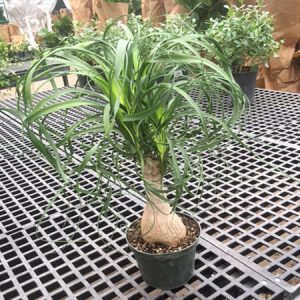Description
Olearia – Daisy Bush –
There are about 180 species of shrubs and small tree, and some herbaceous perennials in this genus. They occur in a wide variety of habitats, including, coastal areas, bogs, forest, riverbanks, and mountain scrub, in Australia and New Zealand. They have generally aromatic, alternate, occasionally clustered, simple, usually leathery leaves, which are white or buff with tiny soft hairs on the undersides. They are grown for their daisy like flower heads, often with colorful petal (white, cream, blue, lavender, purple or pink), held singly, or in corymbs or panicles, that smother the plant in spring to fall. Olearias are suitable for planting in a shrub border, or in a sheltered site if not fully hardy. Some, such as O. x haastii, O. macrodonta, and O. traversii, may be grown as hedges and windbreaks, particularly in coastal areas.
Grow in moderately fertile, well drained soil in full sun or part shade, with shelter from cold, drying winds. Many are tolerant of salt, wind and atmospheric pollution. Prune after flowering to prevent it from becoming leggy.
O. solandri – This dense, upright, bushy shrub or small tree from coastal New Zealand grows 6-12′ feet tall and 6′ feet wide, From slender, sticky, yellow hairy shoots it carries heather like, opposite, narrowly spoon shaped to narrowly obovate or linear, dark green leaves, to 3/8″ long, densely white to yellow felted beneath. From summer to autumn it bears solitary, very strongly scented, pale yellow flowers, 3/8″ across, with about 20 petals.
Zones 9-10





